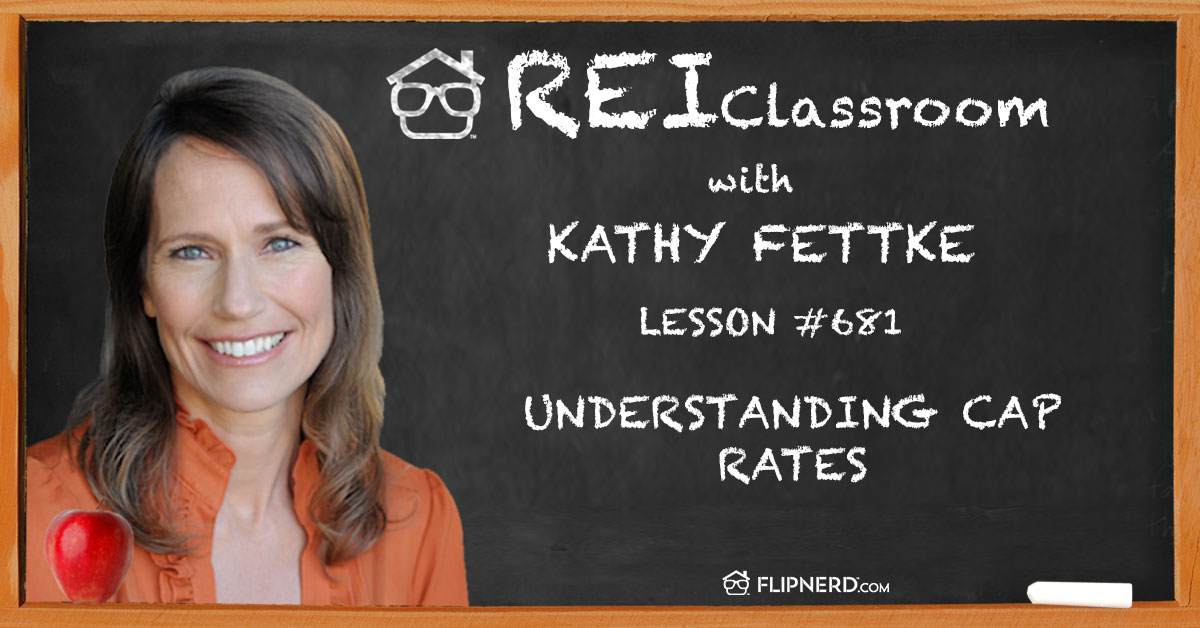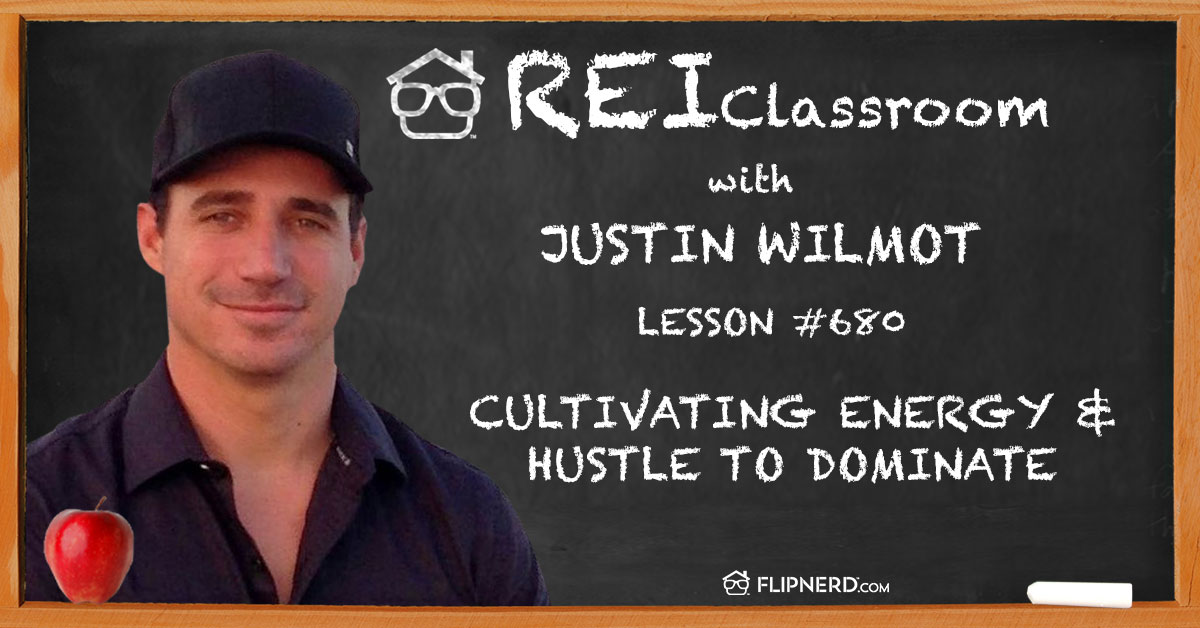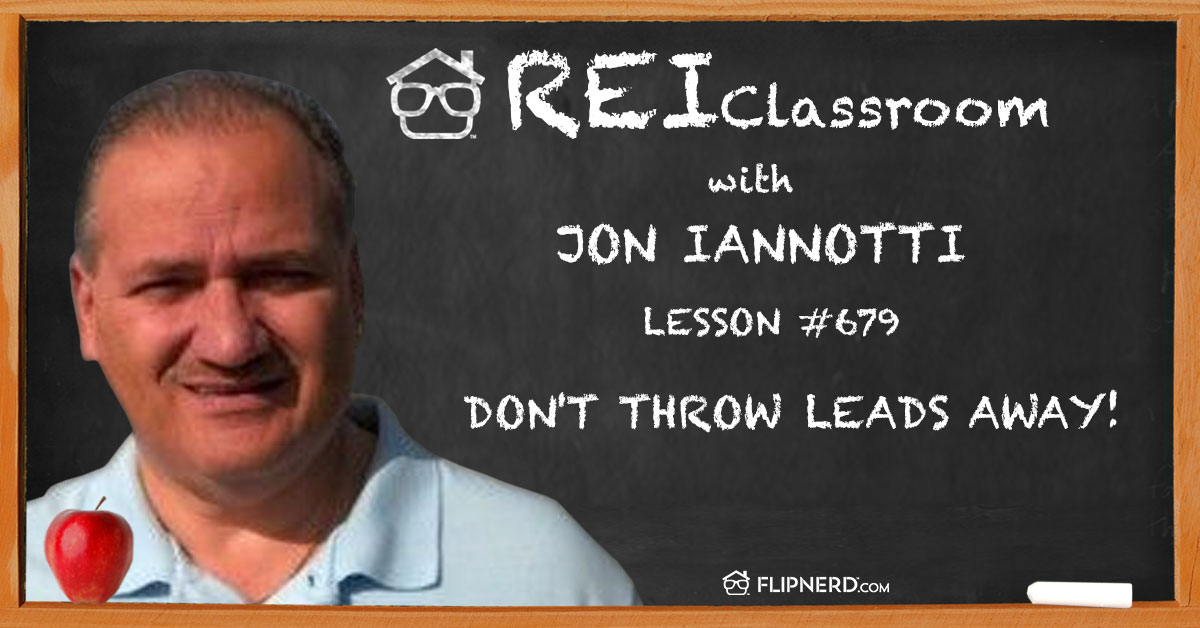Today’s REI Classroom Lesson
Leo Clark emphasizes the need to evolve with the market around you in order to keep profits high. Adapt for what works in your area and for Leo Clark in California, buying land is what works for him.
REI Classroom Summary
Learn more about the criteria to look at when you consider purchasing a property, including zip codes, amenities, crime rates, unemployment rates, and more.
Listen to this REI Classroom Lesson
Real Estate Investing Classroom Show Transcripts:
Mike: Welcome back to the FlipNerd.com REI classroom, where experts across the real estate investment industry teach you quick lessons to take your business to the next level. And now, let’s meet today’s expert host.
Leo: Hey, everyone. Leo Clark here, with Crest Investment Group. I am the host of the REI classroom today, which our topic is buying land.
Mike: This REI classroom real estate lesson is sponsored by virtualstaffnow.com.
Leo: So, for me, today, I went from being a rehabber of three years, into becoming a real estate developer. So, the core of my business is buying land, developing the land, building the homes, selling the property. That is my business. I have transitioned out of rehabbing due to several factors in my market.
You have to analyze, in your market, where you sit, in aspects to your profit margins. If your profit margins are getting squeezed tighter and tighter, and your spreads, of course, are not there, then you have to decide how to evolve your business, because you’re the CEO or the President of a corporation. You have to decide how to grow your business and evolve with the market.
The market, for me, in San Diego, is very, very strong, and is very lucrative in the building area, the development of real estate. So, I took my business almost three years ago, transitioned it into real estate development, and now that’s all I do. So, from the very first piece of buying the land, is what we’re going to talk about. For me, in San Diego, there is multiple factors in what I look for and how I go about buying it.
A lot of people always ask, “Well, how do I know what to pay for it? How do I go and analyze it? How do I know whether or not it’s a right piece of land or, you know, can I build on it? Can I develop it?” Just all these questions are always running around in your head when a piece of land comes across your desk or into your world.
Whenever I get something and today, there’s been three come across my email today already. Whenever I get something, I analyze it very quickly from a standpoint of the zip code that it’s in. Do I want to be in that zip code, first of all? Do I want to be building and developing real estate in that zip code? Do people want to live in that zip code? Is that a very good zip code where people are moving to and want to live in? Is it an affordable zip code?
One thing for us, here, in Southern California is there’s a lot of variance between zip codes, and I always look at from the standpoint of does somebody want to live in that zip code? Are the school districts right? Are they rated very well? Is there good shopping? Is there good infrastructure? Do people want to live in these neighborhoods?
So, when I get something sent to me, right away, I look at the zip code and ask myself, “Do I want to go and build in that zip code?” There’s a website called it’s bestplaces.org, and you can pull up, by zip code, all kinds of numbers. You can pull up unemployment, crime rates, school district ratings. So this website is what I go to to find out, if I don’t know the zip code, to find out more about the zip code. One of the things I’m always looking for is unemployment rate and crime rate. Is it up and in the very high percentages, and how does it correlate to how people are moving there.
So, if it’s got a high crime rate, if it’s got a very high unemployment rate, I don’t want to be in that zip code. So, when a piece of dirt or parcel comes at you, you want to analyze it from the standpoint of do I want to be in that zip code?
Now, the second piece is if I do want to be in that zip code, what is the determining factor of buying it from a standpoint of development, meaning a lot of lots or parcels will come with some attributes. It might have utilities, might have been graded already, might have driveways put in, might have all kinds of things that might have already been done to it, might.
If it’s just raw and it’s out in the middle of nowhere, I don’t look at that. I do what’s called in fill development. In fill development is something that is within a neighborhood somewhere with houses all around or with neighborhoods around it where it is already established. So, the in fill lot is what I’m after. I’m always after any size. Doesn’t matter if it’s 10,000 square feet or a couple of acres, I’m always looking at the in fill lots, not out in rural, middle of nowhere kind of areas.
So when you’re looking at the lot, and if it’s got some amenities with it, utilities, or it’s been graded, or it’s got soils testing done to it, or stuff that you can have to evaluate, that’s your next step in knowing how to go about buying the land. Now, from that standpoint, if it’s got amenities, great. But when you get into analyzing this, the most important piece of analyzing this, I mean, the top of the list, are the comps. You can’t go into a neighborhood if the homes are selling for $200,000 and expect to buy a lot that’s $100,000. You can’t do that.
So the comps are the most important aspect to analyzing. You got to have comps that give you a very good spread. I like about a 78-80% spread between my purchase and the comps selling point, meaning, let’s just say for round figures, if I’m going to buy something at $100,000, I’d better be finding comps at $500,000 or higher. So, when you get to the point of analyzing the lot, go to the comps right away after you know about the amenities with the lot or not.
So the comps will tell you what’s going on in the neighborhood. If there’s a lot of activity, meaning, I don’t know, if there’s 20 listings, there’s 10 pendings, and there’s 15 solds, well, that’s great activity, but if there’s only 1 listing, 0 pendings, and 1 sold in the past 30 days, that’s not good activity. So the activity is what’s really important, because I don’t care about the solds as much as I care about the actives, because going forward developing and building, my comps aren’t looked at from a standpoint of the solds, because the appraiser is going to appraise your home at the finished product to what is going on in that world that day.
So the actives are more important than the solds, as well as the pendings or anything else. So you’re looking for actives, active listings that are at a very good price point. I work in a dollar-per-square-foot arena, meaning I don’t care if it’s a $500,000 sale, I care about what was the dollar per square foot. So, at $500,000, and it sold for $300 a square foot, that’s what I’m after. So, the dollar-per-square-foot is the most important piece because you’re going to be calculating everything off of a build of a dollar per square foot.
So the comps, you got to be analyzing at a dollar per square foot. So you got to kind of line the two up. So, if there’s comps in the area that are at $125 a square foot, and you’re going to be building at $125 a square foot, it doesn’t line up. So you’ve got to look at it from a standpoint of how to buy this parcel, this land, and build a home on it, and what am I going to sell it for? The end in mind, and then you just do the reverse engineering, is what I call on it.
So I start with a $500,000 sale, and I start minusing all my expenses, from my construction, and my permit and fees, to my grading, to my development, to my utilities, and I come up with a final number. Whatever that final number is, that’s what I can afford to buy the lot for.
In my calculations, I look at profit as an expense. Pay yourself first. Everybody in this business forgets to pay themselves first. They go after a deal, or they go after a project, and they don’t calculate in what they want to profit. I always calculate it as the first piece. So, my profit margin that I want to be operating on is 15%. So, 15% of $500,000 is where I want to be making money. So, that’s my first deduction off that $500,000, and then I start deducting everything else off of that, and then I’m left with a number. Let’s say it’s $80,000. That’s what I can afford to buy the lot for.
So reverse engineering, in order to get to the price point of what I should buy the dirt for, is what you’ve got to focus on. So, focus on the comps, focus on the amenities, focus on the dollar-per-square-foot of what’s being sold in that area, and then reverse engineer out from that comp to know what you can buy that lot for.
I hope this was helpful. Leo Clark with Crest Investment Group, again. Look forward to seeing you again soon. Bye.
Mike: Virtualstaffnow.com is the leading virtual assistant provider for real estate investors. As busy real estate investors, there’s nothing more valuable than our time, and virtualstaffnow.com not only helps you find the right real estate virtual assistant for your business, they train them on an ongoing basis, manage them daily to make sure they’re staying productive and effective, and in the event that they’re not the right fit or need to replaced, they handle that for you, too. Whether you need 1 or 100 virtual assistants for your team, start the process right now, at virtualstaffnow.com.
Please note the views and opinions expressed by the individuals in this program do not necessarily reflect those of FlipNerd.com or any of it’s partners, advertisers, or affiliates. Please consult professionals before making investment or tax decisions, as real estate investing can be risky.
Are you a member yet, of FlipNerd.com, the hottest real estate investing social community online? If not, you can join, for free, in less than 30 seconds, and get access to hundreds of off-market deals, vendors in your market to help you in your business, and you can start networking with thousands of other investors just like you. Get your free account now at FlipNerd.com.
Please check out the FlipNerd family of real estate investing shows, where you can access hundreds of expert interviews, quick tips, and lessons from leaders across the real estate investing industry. They’re available at FlipNerd.com/shows, or simply search for FlipNerd in the iTunes store.
Leo: Hey, everyone. Leo Clark here, with Crest Investment Group. I am the host of the REI classroom today, which our topic is buying land.
Mike: This REI classroom real estate lesson is sponsored by virtualstaffnow.com.
Leo: So, for me, today, I went from being a rehabber of three years, into becoming a real estate developer. So, the core of my business is buying land, developing the land, building the homes, selling the property. That is my business. I have transitioned out of rehabbing due to several factors in my market.
You have to analyze, in your market, where you sit, in aspects to your profit margins. If your profit margins are getting squeezed tighter and tighter, and your spreads, of course, are not there, then you have to decide how to evolve your business, because you’re the CEO or the President of a corporation. You have to decide how to grow your business and evolve with the market.
The market, for me, in San Diego, is very, very strong, and is very lucrative in the building area, the development of real estate. So, I took my business almost three years ago, transitioned it into real estate development, and now that’s all I do. So, from the very first piece of buying the land, is what we’re going to talk about. For me, in San Diego, there is multiple factors in what I look for and how I go about buying it.
A lot of people always ask, “Well, how do I know what to pay for it? How do I go and analyze it? How do I know whether or not it’s a right piece of land or, you know, can I build on it? Can I develop it?” Just all these questions are always running around in your head when a piece of land comes across your desk or into your world.
Whenever I get something and today, there’s been three come across my email today already. Whenever I get something, I analyze it very quickly from a standpoint of the zip code that it’s in. Do I want to be in that zip code, first of all? Do I want to be building and developing real estate in that zip code? Do people want to live in that zip code? Is that a very good zip code where people are moving to and want to live in? Is it an affordable zip code?
One thing for us, here, in Southern California is there’s a lot of variance between zip codes, and I always look at from the standpoint of does somebody want to live in that zip code? Are the school districts right? Are they rated very well? Is there good shopping? Is there good infrastructure? Do people want to live in these neighborhoods?
So, when I get something sent to me, right away, I look at the zip code and ask myself, “Do I want to go and build in that zip code?” There’s a website called it’s bestplaces.org, and you can pull up, by zip code, all kinds of numbers. You can pull up unemployment, crime rates, school district ratings. So this website is what I go to to find out, if I don’t know the zip code, to find out more about the zip code. One of the things I’m always looking for is unemployment rate and crime rate. Is it up and in the very high percentages, and how does it correlate to how people are moving there.
So, if it’s got a high crime rate, if it’s got a very high unemployment rate, I don’t want to be in that zip code. So, when a piece of dirt or parcel comes at you, you want to analyze it from the standpoint of do I want to be in that zip code?
Now, the second piece is if I do want to be in that zip code, what is the determining factor of buying it from a standpoint of development, meaning a lot of lots or parcels will come with some attributes. It might have utilities, might have been graded already, might have driveways put in, might have all kinds of things that might have already been done to it, might.
If it’s just raw and it’s out in the middle of nowhere, I don’t look at that. I do what’s called in fill development. In fill development is something that is within a neighborhood somewhere with houses all around or with neighborhoods around it where it is already established. So, the in fill lot is what I’m after. I’m always after any size. Doesn’t matter if it’s 10,000 square feet or a couple of acres, I’m always looking at the in fill lots, not out in rural, middle of nowhere kind of areas.
So when you’re looking at the lot, and if it’s got some amenities with it, utilities, or it’s been graded, or it’s got soils testing done to it, or stuff that you can have to evaluate, that’s your next step in knowing how to go about buying the land. Now, from that standpoint, if it’s got amenities, great. But when you get into analyzing this, the most important piece of analyzing this, I mean, the top of the list, are the comps. You can’t go into a neighborhood if the homes are selling for $200,000 and expect to buy a lot that’s $100,000. You can’t do that.
So the comps are the most important aspect to analyzing. You got to have comps that give you a very good spread. I like about a 78-80% spread between my purchase and the comps selling point, meaning, let’s just say for round figures, if I’m going to buy something at $100,000, I’d better be finding comps at $500,000 or higher. So, when you get to the point of analyzing the lot, go to the comps right away after you know about the amenities with the lot or not.
So the comps will tell you what’s going on in the neighborhood. If there’s a lot of activity, meaning, I don’t know, if there’s 20 listings, there’s 10 pendings, and there’s 15 solds, well, that’s great activity, but if there’s only 1 listing, 0 pendings, and 1 sold in the past 30 days, that’s not good activity. So the activity is what’s really important, because I don’t care about the solds as much as I care about the actives, because going forward developing and building, my comps aren’t looked at from a standpoint of the solds, because the appraiser is going to appraise your home at the finished product to what is going on in that world that day.
So the actives are more important than the solds, as well as the pendings or anything else. So you’re looking for actives, active listings that are at a very good price point. I work in a dollar-per-square-foot arena, meaning I don’t care if it’s a $500,000 sale, I care about what was the dollar per square foot. So, at $500,000, and it sold for $300 a square foot, that’s what I’m after. So, the dollar-per-square-foot is the most important piece because you’re going to be calculating everything off of a build of a dollar per square foot.
So the comps, you got to be analyzing at a dollar per square foot. So you got to kind of line the two up. So, if there’s comps in the area that are at $125 a square foot, and you’re going to be building at $125 a square foot, it doesn’t line up. So you’ve got to look at it from a standpoint of how to buy this parcel, this land, and build a home on it, and what am I going to sell it for? The end in mind, and then you just do the reverse engineering, is what I call on it.
So I start with a $500,000 sale, and I start minusing all my expenses, from my construction, and my permit and fees, to my grading, to my development, to my utilities, and I come up with a final number. Whatever that final number is, that’s what I can afford to buy the lot for.
In my calculations, I look at profit as an expense. Pay yourself first. Everybody in this business forgets to pay themselves first. They go after a deal, or they go after a project, and they don’t calculate in what they want to profit. I always calculate it as the first piece. So, my profit margin that I want to be operating on is 15%. So, 15% of $500,000 is where I want to be making money. So, that’s my first deduction off that $500,000, and then I start deducting everything else off of that, and then I’m left with a number. Let’s say it’s $80,000. That’s what I can afford to buy the lot for.
So reverse engineering, in order to get to the price point of what I should buy the dirt for, is what you’ve got to focus on. So, focus on the comps, focus on the amenities, focus on the dollar-per-square-foot of what’s being sold in that area, and then reverse engineer out from that comp to know what you can buy that lot for.
I hope this was helpful. Leo Clark with Crest Investment Group, again. Look forward to seeing you again soon. Bye.
Mike: Virtualstaffnow.com is the leading virtual assistant provider for real estate investors. As busy real estate investors, there’s nothing more valuable than our time, and virtualstaffnow.com not only helps you find the right real estate virtual assistant for your business, they train them on an ongoing basis, manage them daily to make sure they’re staying productive and effective, and in the event that they’re not the right fit or need to replaced, they handle that for you, too. Whether you need 1 or 100 virtual assistants for your team, start the process right now, at virtualstaffnow.com.
Please note the views and opinions expressed by the individuals in this program do not necessarily reflect those of FlipNerd.com or any of it’s partners, advertisers, or affiliates. Please consult professionals before making investment or tax decisions, as real estate investing can be risky.
Are you a member yet, of FlipNerd.com, the hottest real estate investing social community online? If not, you can join, for free, in less than 30 seconds, and get access to hundreds of off-market deals, vendors in your market to help you in your business, and you can start networking with thousands of other investors just like you. Get your free account now at FlipNerd.com.
Please check out the FlipNerd family of real estate investing shows, where you can access hundreds of expert interviews, quick tips, and lessons from leaders across the real estate investing industry. They’re available at FlipNerd.com/shows, or simply search for FlipNerd in the iTunes store.










